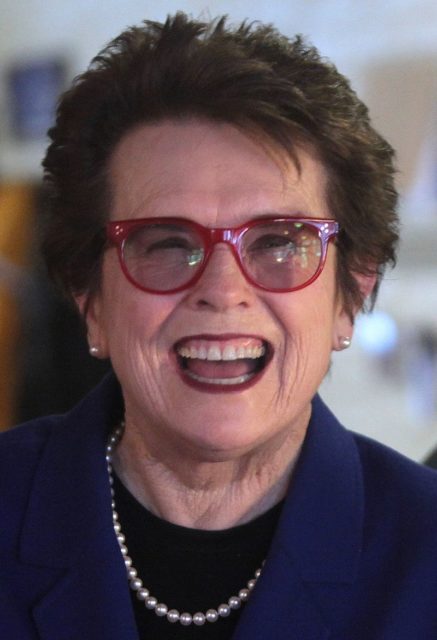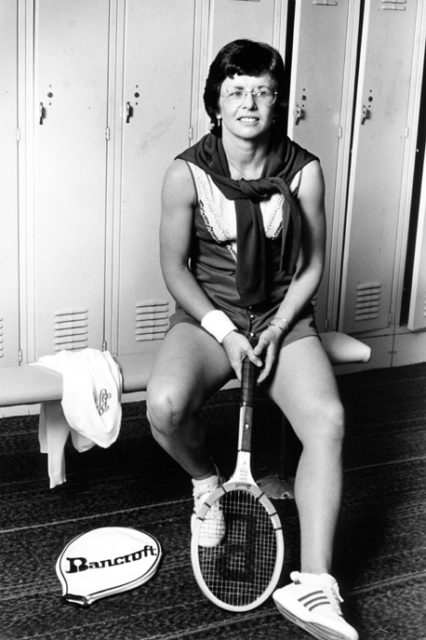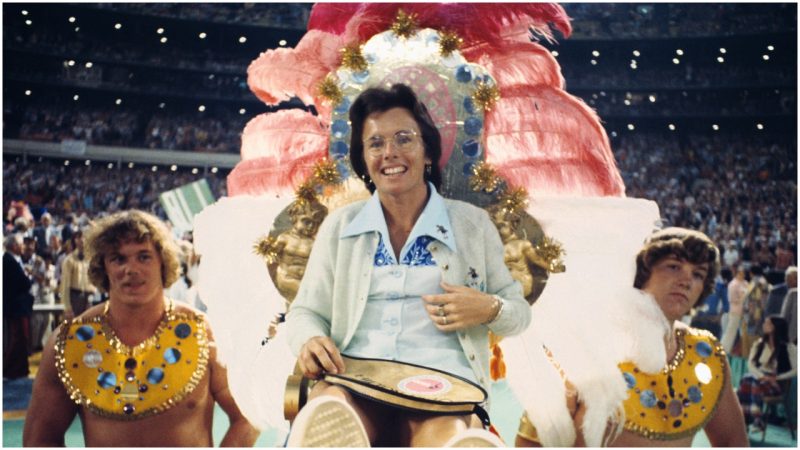In 1971, world-renowned tennis player Billie Jean King started a secret relationship with a woman named Marilyn Barnett, which ended up nearly destroying King’s career.The film Battle of the Sexes tells the story of tennis champion Billie Jean, who is played by actress Emma Stone, as she takes on the obnoxious Bobby Riggs. And while audiences do see a fictionalized version of the relationship between the famed athlete and Marilyn Barnett, who is played by Andrea Riseborough, there is more to the real story between the two women, which, it turns out, is different than the sugarcoated version we see on the big screen.
As King recalled years later through interviews, she came to the realization that she was attracted to the same sex in 1968, when she was in her mid-twenties. As King describes, she felt “so ashamed” that she didn’t discuss the topic with anyone, not with her husband nor any other member of her close family. To put this in context of the prevailing social attitude, note that the American Psychiatric Association listed homosexuality as a psychiatric disorder up until 1973.
But then Barnett came into her life. The two of them met in 1971 and their encounter can be followed in the film as Barnett, who works as a hair stylist, gives King a new haircut. The tennis player had already gone though a lot of difficult emotions, as she had undergone an abortion earlier that same year.
While King was not shy to voice her opinion that both women and men should be equally paid in tennis–something which shook the sports establishment–sharing her abortion story was not in her plans, and neither was she keen to tell about her lesbian love affair, but both were forced onto her.

King’s first husband was responsible for making her abortion an item of gossip. He gave the information without her permission to Ms magazine and the tennis star was featured as a pro-choice woman; however, she had no choice in the information becoming public knowledge. It was only after the story was published that she was aware of his betrayal.
It must have been a turbulent year for King. Her relationship with Barnett began some six months following their first encounter. According to biographies, King employed the hairstylist as her personal assistant, so wherever King went for a tennis match, Barnett accompanied. Their relationship lasted for seven years, until it ended in 1979. Things between the two came to a head two years after their break-up. The athlete had previously agreed that Barnett could occupy her Malibu beach house, and when King requested that she leave, Barnett added this to her list of reasons to sue King for palimony.
The case failed in court, as there were legal constraints when it came to LGBT affairs at the time, but the entire scandal had done more than enough damage to King’s tennis career. That same year, in 1981, Barnett attempted suicide. She survived, though ended up handicapped.
This tragedy hardly gets a mention in the recent film release’s plot-line, which concludes with the historic tennis match played on September 20, 1973, and famously dubbed as the “battle of the sexes”–where King famously defeats the ex-men’s category tennis champion Bobby Riggs, played in the movie by Steve Carell.
However, following the court case in 1981, King still needed years to come to terms with her sexuality. In the beginning, the athlete had to deal with a lot of pressure that came from family members as much as it came from colleagues. She distanced herself both from Barnett and from the fact that she was gay, even providing media statements that it was just a fling rather than admit the extent of their relationship.

When King came out, she was the first notable woman athlete to share her same-sex sexual orientation. In 1987, King also divorced from her husband, after which she settled into a relationship with former tennis player and coach Ilana Kloss.
Both for her contributions to women’s right and the actions that she took for the LGBT community, King was distinguished in 2009 with a National Medal of Freedom presented to her by President Barack Obama.

Concerning the Battle of the Sexes, it still covers a culturally significant event, and one faithfully recaptured in the 2017 release. Back in 1973, it is estimated that some 90 million people from all around the planet tuned in to watch the game, and unquestionably it went down in history as one of the world’s most-watched television sports events of all time.
Read another story from us: Suzanne Lenglen: the woman who revolutionized tennis
While some believe this event had a much more significant impact than just what happened on the tennis court, other critics would comment that perhaps the match was nothing but a set-up, to distract people from rethinking the real problems that overwhelmed sport and American society, in general, that year.
